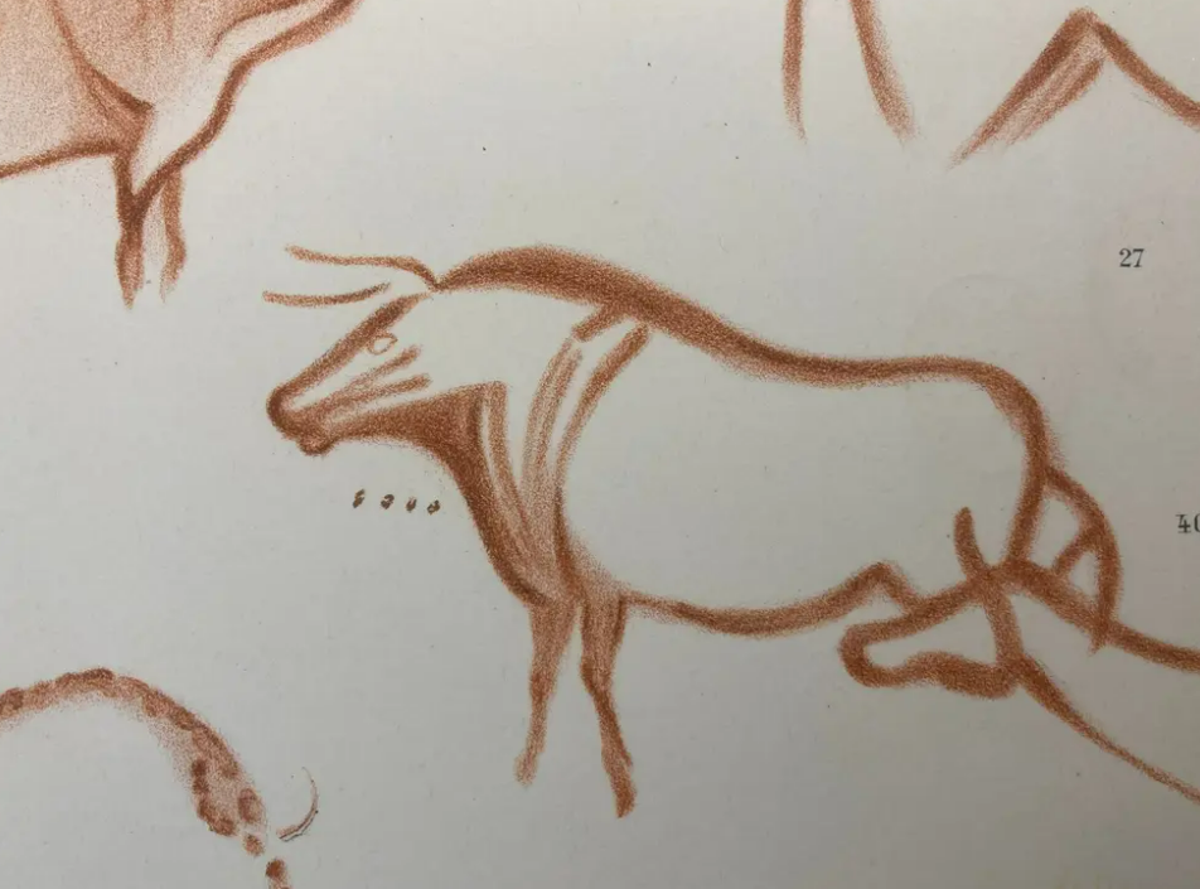Mystery markings in 20,000-year-old drawings decoded for first time

- Oops!Something went wrong.Please try again later.
Mysterious markings seen in ancient drawings have finally been decoded by British scientists who claim to have found evidence of “writing” dating back at least 14,000 years earlier than previously thought.
A new study reveals that Ice Age hunter-gatherers were using markings combined with drawings of their animal prey to store and communicate “sophisticated” information about the behaviour of species crucial to their survival at least 20,000 years ago.
The researchers explained that as the marks, found in more than 600 images on cave walls and objects across Europe, record information numerically and reference a calendar rather than recording speech, they cannot be called “writing” in the sense of the pictographic and cuneiform systems of early writing that emerged in Sumer from 3,400 BC onwards.
Instead, the team refers to them as a “proto-writing system” - pre-dating other token-based systems that are thought to have emerged during the Neolithic period by at least 10,000 years.
The study, published in the Cambridge Archaeological Journal, was led by independent researcher Ben Bacon, and involved senior academics from Durham University and University College London (UCL).
Until now, archaeologists have known that the sequences of lines, dots, and other marks from the last Ice Age were storing some kind of information about species such as wild horses, deer, cattle, and mammoths - but did not know their specific meaning.
Mr Bacon was keen to decode those, and in particular the inclusion of a ‘Y’ sign – formed by adding a diverging line to another.
By using the birth cycles of equivalent animals today as a reference point, the researchers were able to work out that the number of marks associated with Ice Age animals were a record, by lunar month, of when they were mating.
Mr Bacon had hypothesised that the ‘Y’ sign stood for ‘giving birth’ and the work of the team enabled that to be confirmed.
Their work showed that the sequences record mating and birthing seasons and found a “statistically significant” correlation between the number of marks the position of the ‘Y’ sign and the months in which modern animals’ mate and birth respectively.
Mr Bacon said: “The meaning of the markings within these drawings has always intrigued me so I set about trying to decode them, using a similar approach that others took to understanding an early form of Greek text.
“Using information and imagery of cave art available via the British Library and on the internet, I amassed as much data as possible and began looking for repeating patterns.
“As the study progressed, I reached out to friends and senior university academics, whose expertise were critical to proving my theory.
“It was surreal to sit in the British Library and slowly work out what people 20,000 years ago were saying but the hours of hard work were certainly worth it.”
Professors Paul Pettitt and Robert Kentridge, of Durham University, have worked together developing the field of visual palaeopsychology, the scientific investigation of the psychology that underpins the earliest development of human visual culture.
Prof Pettitt said: “To say that when Ben contacted us about his discovery was exciting is an understatement. I am glad I took it seriously.
“This is a fascinating study that has brought together independent and professional researchers with expertise in archaeology and visual psychology, to decode information first recorded thousands of years ago.
“The results show that Ice Age hunter-gatherers were the first to use a systematic calendar and marks to record information about major ecological events within that calendar.
“In turn, we’re able to show that these people - who left a legacy of spectacular art in the caves of Lascaux and Altamira – also left a record of early timekeeping that would eventually become commonplace among our species.”
Prof Kentridge added: “The implications are that Ice Age hunter-gatherers didn’t simply live in their present, but recorded memories of the time when past events had occurred and used these to anticipate when similar events would occur in the future, an ability that memory researchers call mental time-travel.”
UCL Professor Tony Freeth, who led research that enabled the function of the ancient Greek astronomical clock Antikithera mechanism to be deciphered, was also part of the team.
He said: “I was stunned when Ben came to me with his underlying idea that the numbers of spots or lines on the animals represented the lunar month of key events in the animals’ life cycles.
“Lunar calendars are difficult because there are just under 12-and-a-half lunar months in a year, so they do not fit neatly into a year. As a result, our own modern calendar has all but lost any link to actual lunar months.
“In the Antikythera Mechanism, they used a sophisticated 19-year mathematical calendar to resolve the incompatibility of the year and the lunar month - impossible for Palaeolithic peoples.
“Their calendar had to be much simpler. It also had to be a ‘meteorological calendar’ - tied to changes in temperature, not astronomical events such as the equinoxes.
“With these principles in mind, Ben and I slowly devised a calendar which helped to explain why the system that Ben had uncovered was so universal across wide geography and extraordinary time scales.”
The team have shown that, despite the difficulties, researchers can crack the meaning of at least some of the symbols.
Mr Bacon added: “That’s encouraged us to continue our work and to attempt to understand more of the symbols, and their cognitive bases.
“What we are hoping, and the initial work is promising, is that unlocking more parts of the proto-writing system will allow us to gain an understanding of what information our ancestors valued.
“As we probe deeper into their world what we are discovering is that these ancient ancestors are a lot more like us than we had previously thought.
“These people, separated from us by many millennia, are suddenly a lot closer.”

